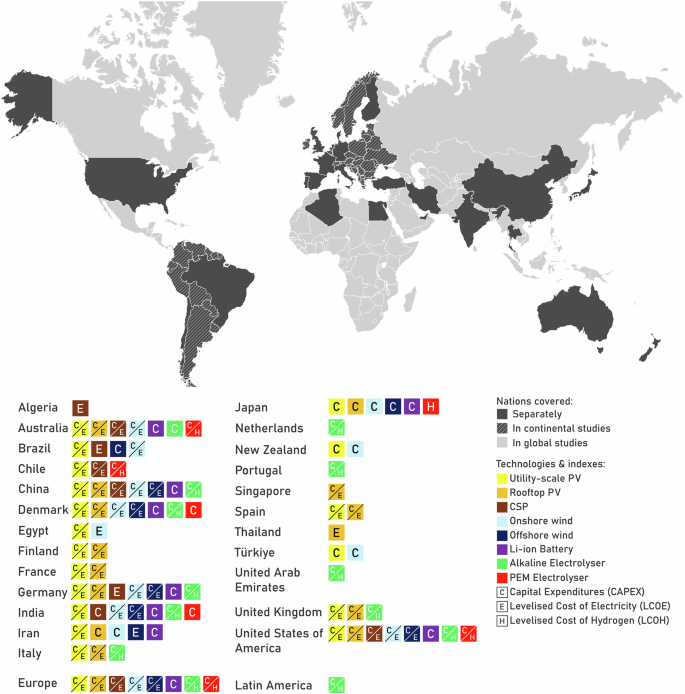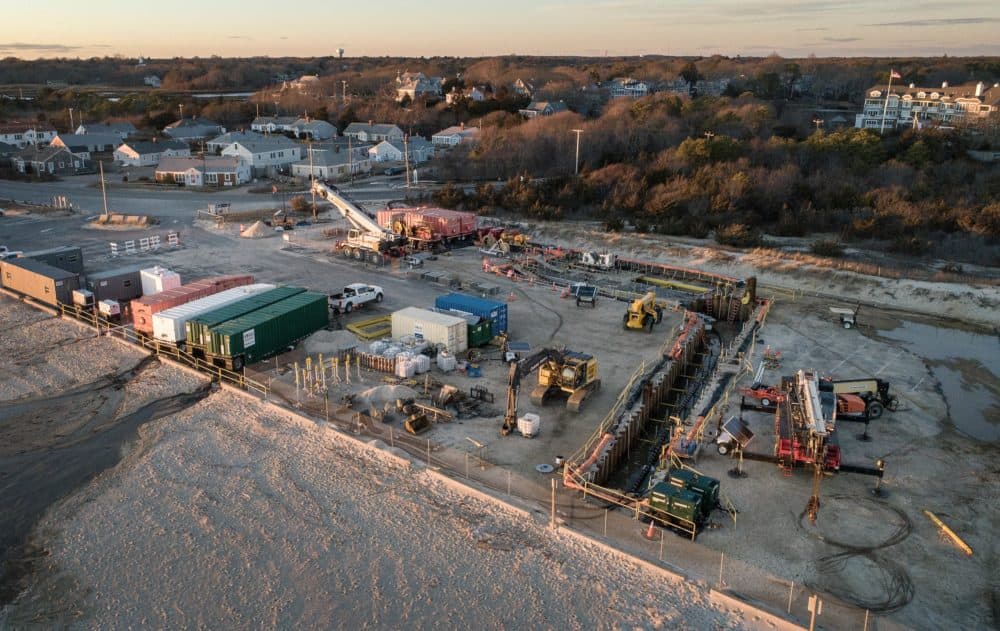Report on the Implementation of Smart Meters and the Advancement of Smart Grid Technology
This report analyzes the deployment of smart meters and the evolution of the smart grid, based on insights from industry expert Gary Leidich. The primary focus is on the alignment of these technological advancements with the United Nations Sustainable Development Goals (SDGs), particularly those concerning energy, infrastructure, and climate action.
Core Components and Benefits of Smart Grid Infrastructure
The Function of Smart Meters
Smart meters are a foundational component of the modern smart grid, providing critical data and communication capabilities. Their primary functions contribute directly to creating a more efficient and sustainable energy system.
- Provide real-time energy consumption data to both consumers and utility providers.
- Enable two-way communication between the meter and the central energy management system.
- Allow for remote meter reading, enhancing operational efficiency and reducing the carbon footprint associated with manual checks.
- Facilitate rapid detection and reporting of power outages, leading to faster restoration times and improved grid resilience.
Advantages for Energy Systems and Consumers
The rollout of smart meters offers significant benefits that support sustainable development objectives.
- Enhanced Consumer Empowerment: By providing detailed usage information, smart meters empower consumers to make informed decisions to reduce their energy consumption and costs. This directly supports SDG 12 (Responsible Consumption and Production) by promoting resource efficiency.
- Improved Grid Reliability: The technology allows for quicker identification and resolution of grid disruptions. This builds resilient infrastructure as outlined in SDG 9 (Industry, Innovation, and Infrastructure) and is crucial for developing SDG 11 (Sustainable Cities and Communities).
- Operational Efficiency and Integration: Automated processes and superior load balancing reduce operational costs and minimize energy waste, which is essential for achieving the targets within SDG 7 (Affordable and Clean Energy).
Aligning Smart Grid Technology with Sustainable Development Goals (SDGs)
The transition to a smart grid is a critical enabler for achieving several key SDGs. This technological upgrade moves beyond simple energy delivery to create an intelligent, responsive, and sustainable energy network.
Contribution to SDG 7: Affordable and Clean Energy
Smart grids are instrumental in ensuring access to affordable, reliable, sustainable, and modern energy for all.
- They facilitate the seamless integration of variable renewable energy sources, such as solar and wind, into the national grid.
- They improve overall energy efficiency by minimizing transmission and distribution losses through real-time monitoring and control.
- They provide the necessary infrastructure for demand-response programs, which help balance energy supply and demand without relying on carbon-intensive fossil-fuel power plants.
Supporting SDG 13: Climate Action
By fundamentally changing how energy is managed and consumed, smart grid technology is a powerful tool for climate change mitigation.
- It directly reduces greenhouse gas emissions by optimizing energy consumption and enabling a higher percentage of renewable energy in the power mix.
- It provides the granular data necessary for policymakers and utilities to design and implement effective carbon reduction strategies in the energy sector.
Fostering Sustainable Infrastructure and Communities (SDG 9 & SDG 11)
The development of a smart grid is an essential upgrade to critical national infrastructure, fostering innovation and creating sustainable urban environments.
- It modernizes the electrical grid, making it more resilient to climate-related events and other potential disruptions.
- It serves as the backbone for smart city applications, including intelligent street lighting, efficient public transport, and widespread electric vehicle (EV) charging infrastructure.
- It ensures the stable and reliable energy supply required for inclusive and sustainable economic growth in urban and rural communities.
Analysis of Sustainable Development Goals in the Article
1. Which SDGs are addressed or connected to the issues highlighted in the article?
The article discusses the rollout of smart meters and the future of the smart grid. These topics are directly connected to several Sustainable Development Goals (SDGs) focused on energy, infrastructure, sustainability, and climate action.
- SDG 7: Affordable and Clean Energy: The development of a smart grid and the use of smart meters are fundamental to modernizing energy systems, improving efficiency, and ensuring reliable access to energy.
- SDG 9: Industry, Innovation, and Infrastructure: The article’s focus on the “smart grid” represents a significant upgrade to critical energy infrastructure, fostering innovation and creating a more resilient and sustainable system.
- SDG 11: Sustainable Cities and Communities: Smart grids are a key component of smart city infrastructure, contributing to more efficient, sustainable, and resilient urban environments.
- SDG 13: Climate Action: By enabling greater energy efficiency and better integration of renewable energy sources, smart grids are a crucial tool in mitigating climate change.
2. What specific targets under those SDGs can be identified based on the article’s content?
Based on the discussion of “smart meters” and the “smart grid,” the following specific SDG targets can be identified:
- Target 7.3: By 2030, double the global rate of improvement in energy efficiency.
- Explanation: One of the primary “benefits of smart meters,” as mentioned in the article, is their ability to provide real-time data on energy consumption. This empowers both consumers and utility companies to manage energy use more effectively, leading to significant improvements in energy efficiency.
- Target 9.4: By 2030, upgrade infrastructure and retrofit industries to make them sustainable, with increased resource-use efficiency and greater adoption of clean and environmentally sound technologies and industrial processes.
- Explanation: The article’s subject, the “future of the smart grid,” directly relates to this target. A smart grid is a technological upgrade to traditional energy infrastructure, designed to increase the efficiency and sustainability of the energy sector.
- Target 11.b: By 2020, substantially increase the number of cities and human settlements adopting and implementing integrated policies and plans towards inclusion, resource efficiency, mitigation and adaptation to climate change, resilience to disasters.
- Explanation: The rollout of smart meters is an implementation of a policy aimed at improving resource efficiency (energy) and mitigating climate change at the community and city level.
3. Are there any indicators mentioned or implied in the article that can be used to measure progress towards the identified targets?
The article does not explicitly mention any official SDG indicators. However, it implies ways in which progress could be measured:
- Implied Indicator for Target 7.3: The article discusses the “benefits of smart meters.” Progress towards energy efficiency (Target 7.3) could be measured by tracking the reduction in energy consumption per household or per capita in areas where smart meters have been rolled out. This aligns with the concept behind official indicator 7.3.1: Energy intensity measured in terms of primary energy and GDP.
- Implied Indicator for Target 9.4: The article focuses on the “roll out” of smart meters. A direct, practical indicator of progress for upgrading infrastructure would be the number or percentage of households and businesses equipped with smart meters. This serves as a proxy for the adoption of cleaner and more efficient technology in the energy infrastructure sector.
4. Summary Table of SDGs, Targets, and Indicators
| SDGs | Targets | Indicators |
|---|---|---|
| SDG 7: Affordable and Clean Energy | Target 7.3: By 2030, double the global rate of improvement in energy efficiency. | Implied: Reduction in energy intensity and consumption following the installation of smart meters. (Relates to official indicator 7.3.1: Energy intensity). |
| SDG 9: Industry, Innovation, and Infrastructure | Target 9.4: By 2030, upgrade infrastructure… with increased resource-use efficiency and greater adoption of clean and environmentally sound technologies. | Implied: The number or percentage of energy consumers with smart meters installed as a measure of infrastructure upgrade and technology adoption. |
| SDG 11: Sustainable Cities and Communities | Target 11.b: …substantially increase the number of cities… implementing integrated policies… towards… resource efficiency, mitigation and adaptation to climate change… | Implied: The implementation of smart meter rollout programs as a concrete policy for resource efficiency in cities. |
Source: news.utoledo.edu






